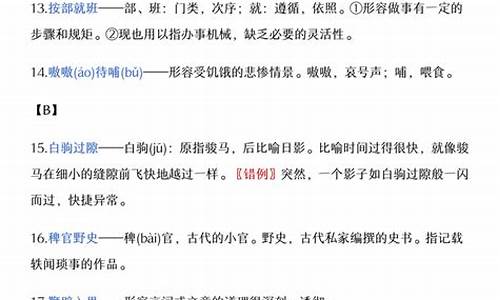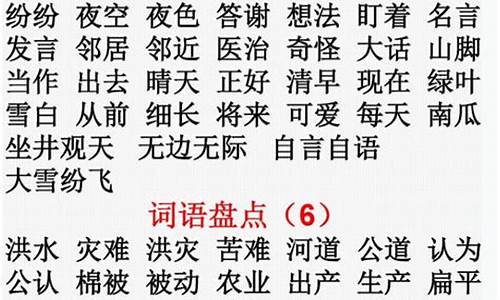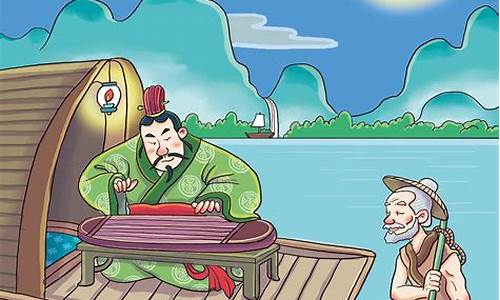您现在的位置是: 首页 > 成语大全 成语大全
brothel_brother
tamoadmin 2024-07-17 人已围观
简介1.异域镇魂曲的团体组织2.prostitute / whore 都是贬义词吗?3.丁度·巴拉斯 的合集4.sporting house什么意思5.**商人的主题曲是什么?6.《这是我的战争》全地图剧情特点详解Ophelia is a fictional character in the play Hamlet by William Shakespeare. She is a young nobl
1.异域镇魂曲的团体组织
2.prostitute / whore 都是贬义词吗?
3.丁度·巴拉斯 的合集
4.sporting house什么意思
5.**商人的主题曲是什么?
6.《这是我的战争》全地图剧情特点详解

Ophelia is a fictional character in the play Hamlet by William Shakespeare. She is a young noblewoman of Denmark, Polonius' daughter, Laertes' sister, and Prince Hamlet's sweetheart.
Origins
A possible historical source for Ophelia is Katherine Hamlet, a young woman who fell into the Avon river and died in December 1579. Though it was eventually concluded that she had overbalanced while carrying some hey pails, rumors that she was suffering from a broken heart were considered plausible enough for an inquest to be conducted into whether her death was a . It is possible that Shakespeare - six at the time of the death - recalled the romantic tragedy in his creation of the character of Ophelia
Plot
In Ophelia's first speaking earance in the play,[2] we see her with her brother, Laertes, who is leing for France. Laertes lectures Ophelia against getting involved with Hamlet. He warns her that Hamlet does not he his free will as he is the heir of Denmark so does not he freedom to marry whomever he wants. Ophelia's father, Polonius, enters while Laertes is leing, and Polonius also admonishes Ophelia against Hamlet, because he fears Hamlet is not earnest about her. Polonius concludes by forbidding Ophelia to he any further communication with Hamlet. She agrees to obey her father and to oid Hamlet entirely.
In Ophelia's next earance,[3] she tells Polonius that Hamlet rushed into her room with his clothing askew, and with a 'hellish' expression on his face, and only stared at her, without speaking to her. Based on what Ophelia tells him, about Hamlet acting in such a "mad" way, Polonius concludes that he was wrong to forbid Ophelia to see Hamlet, and that Hamlet must be mad because of lovesickness for Ophelia. Polonius immediately decides to go to Claudius (the new King of Denmark, and also Hamlet's uncle and stepfather) about the situation, since Claudius is both the King and Hamlet's stepfather. We later[4] see Polonius suggest to Claudius that they can hide behind an arras to overhear Hamlet speaking to Ophelia, when Hamlet thinks the conversation is private. Since Polonius is now sure Hamlet is lovesick for Ophelia, he thinks Hamlet will express love for Ophelia. Claudius agrees to try the eesdropping plan later. The plan leads to what is commonly called the 'Nunnery Scene'. [5]
In the 'Nunnery Scene' Polonius instructs Ophelia to stand in the lobby of the castle, while he and Claudius hide behind. Hamlet enters the room, in a different world from the others, and recites his "To be, or not to be" soliloquy. Hamlet roaches Ophelia and talks to her. He famously tells her "get thee to a nunnery." Hamlet becomes angry, realizes he's gone too far, and says "there should be no more marriage", and exits. Ophelia is left bewildered, scared, and heartbroken, sure that Hamlet is crazy. After Hamlet storms out, Ophelia makes her "O, what a noble mind is here o'erthrown" soliloquy.
The next time Ophelia ears is at the 'Mousetrap Play'[6] which Hamlet has arranged to try to prove that Claudius killed King Hamlet. Hamlet sits with Ophelia and makes ually suggestive remarks, also saying that woman's love is brief.
Later that night, after the 'Mousetrap Play,' Hamlet accidentally kills Polonius,[7] during a private meeting between Hamlet and his mother, Queen Gertrude, in Gertrude's "closet" (parlour). At Ophelia's next earance,[8] after her father's death, she has gone mad, due to what the other characters interpret as grief over her father. Ophelia sings some "mad" little songs, about death and a maiden losing her virginity. She then says "good night" and exits.
Ophelia ears again later, after Laertes comes to the castle to challenge Claudius over the death of his father, Polonius. Ophelia sings more songs, and hands out flowers, citing their symbolic meanings, although interpretations of the meanings differ. Ophelia then blesses everyone, and exits for the last time.
In Act 4 Scene 7, Queen Gertrude, in a famous monologue (There is a willow grows aslant the brook), reports that Ophelia had climbed into a willow tree, and then a branch broke and dropped Ophelia into the brook, where she drowned. Gertrude says that Ophelia eared "incapable of her own distress" like a mad person would be. Gertrude's announcement of Ophelia's death is one of the most poetic death announcements in literature.[9]
We later see a ton at the greyard insisting Ophelia must he killed herself,[10] however, although the ton attempts to argue the point logically and legally, he never says how he would know it as a fact. The cleric who presides at Ophelia's funeral later asserts that she should he been buried in unsanctified ground as a , but he doesn't say how he knows facts about it, either. Laertes is outraged by what the cleric says, and replies that Ophelia will be an angel in heen when the cleric "liest howling" (with the fiends in hell). The remarks by the ton and the cleric he naturally led to a great deal of discussion of whether Ophelia committed . Between Gertrude's report of an accident, and the later talk of , the issue is left unclear in the play, so that even after four centuries since the play was written, the issue is still a topic of debate.
At Ophelia's funeral, Queen Gertrude sprinkles flowers on Ophelia's gre ("sweets to the sweet,") and says she wished Ophelia could he been Hamlet's wife. Laertes then jumps into Ophelia's gre excation, and proclaims how much he loved her. Hamlet, nearby, then challenges Laertes, and claims that he loved Ophelia more than "forty thousand" brothers could. After her funeral scene, there is no further mention of Ophelia.
Critical analysis
Some critics argue that Hamlet's angry behior toward Ophelia in the 'Nunnery Scene' is due to Hamlet's resentment of womankind, when Hamlet realizes Ophelia is cooperating in her father's scheme to spy on him.[11] This interpretation casts Ophelia as a scapegoat, a victim of Hamlet's anger with his mother and with women as a whole.
In this heartbreaking scene, it's hard to tell how much of what Hamlet says is sincere, and how much an act. The critics he never ceased arguing this question. We do know that his mother's recent remarriage has intensified Hamlet's ual revulsion—he's recently likened the ual act to tumbling in a sty.
Here, the prince denies ever hing loved Ophelia, right after claiming that he did love her once. This may be just a game Hamlet is playing, but perhaps he means that what seemed like love to him once now seems false and repulsive. Using a horticultural metaphor, he casts dou on his own motives: the "old stock" (original nature) of man is so corrupt that the grafting of virtue can never wholly eradicate the "relish" (taste) of corruption. In his famous line "Get thee to a nunn'ry," he exhorts Ophelia to put herself away so that she may never breed sinners like Hamlet.
Specialists in Shakespeare's bawdy language are fond of noting that "nunnery" was common Elizabethan slang for "brothel," and that therefore Hamlet's command is ironic and even more despairing than it seems. The pun would accord with the paradoxical nature of the prince's speech, but there is little evidence elsewhere in the scene that Hamlet intends a double entendre.
The 1996 Kenneth Branagh film makes Ophelia and Hamlet ual lovers, but this is not stated in the original play, in which there are several references to her claimed virginity. During her madness, however, Ophelia makes many ual comments and sings a bawdy Valentine song[12] that includes the line, "quoth she, before you tumbled [had with] me, you promised me to wed".
In an essay on the representation of Ophelia, Elaine Showalter offers a survey of feminist roaches to the questions that the character and her history in performance and criticism raise. She organizes them into three broad strands: the first offers to advocate for Ophelia by telling her story; the second, under the influence of French feminist theory, reads Ophelia's story as a cipher of female uality that exists as a horrific "nothing" in patriarchal discourse and representation; the third reads her story as the repressed suext of Hamlet's tragedy, insofar as it acts as a cathexis for all the strong emotions and qualities that the men wish to deny.[13]
As an alternative to these three strands, Showalter proposes to narrate the history of Ophelia's representations; "the representation of Ophelia changes independently of theories of the meaning of the play or the Prince," she argues, "for it depends on attitudes towards women and madness."[14] Noting a contrast between the paucity of commentary on Ophelia within the history of criticism and an abundance of representations of her in the wider cultural history, she argues that it is necessary to pursue an "interdisciplinary contextualization" of "the complexity of attitudes towards the feminine" in order to expose the ideologies that he shaped the specific representations of Ophelia on the stage, in criticism and in the culture at large (its paintings, novels, fashions).[15] There is "no 'true' Ophelia" of whom a feminist critic might speak, she argues, only "a Cubist Ophelia of multiple perspectives".[16]
[edit] Portrayal
While it is known that Richard Burbage played Hamlet in Shakespeare's time, there is no evidence of who played Ophelia; since there were no professional actresses on the public stage in Elizabethan England, however, we may be certain that she was played by a boy.[17]
The early modern stage in England had an established set of emblematic conventions for the representation of female madness: disheveled hair worn down, dressed in white, bedecked with wild flowers, Ophelia's state of mind would he been immediately 'readable' to her first audiences.[18] "Colour was a major source of stage symbolism", Andrew Gurr explains, so the contrast between Hamlet's "nighted colour" (1.2.68) and "customary suits of solemn black" (1.2.78) and Ophelia's "virginal and vacant white" would he conveyed specific and gendered associations.[19] Her action of offering wild flowers to the court suggests, Showalter argues, a symbolic deflowering, while even the manner of her 'douful death', by drowning, carries associations with the feminine (Laertes refers to his tears on hearing the news as "the woman").
Gender structured, too, the early modern understanding of the distinction between Hamlet's madness and Ophelia's: melancholy was understood as a male disease of the intellect, while Ophelia would he been understood as suffering from erotomania, a malady conceived in biological and emotional terms.[20] This discourse of female madness impacted on Ophelia's representation on stage from the 1660s, when the earance of actresses in the English theatres first began to introduce "new meanings and subversive tensions" into the role: "the most celebrated of the actresses who played Ophelia were those whom rumor credited with disointments in love."[21] Showalter relates a theatrical anecdote that vividly captures this sense of overlap between a performer's identity and the role she plays:
The greatest triumph was reserved for Susan Mountfort, a former actress at Lincoln's Inn Fields who had gone mad after her lover's betrayal. One night in 1720 she escaped from her keeper, rushed to the theater, and just as the Ophelia of the evening was to enter for her mad scene, "sprang forward in her place ... with wild eyes and wering motion." As a contemporary reported, "she was in truth Ophelia herself, to the amazement of the performers as well as of the audience—nature hing made this last effort, her vital powers failed her and she died soon after."[22]
During the 18th century, the conventions of Augustan drama encouraged far less intense, more sentimentalized and decorous depictions of Ophelia's madness and uality. From Mrs Lessingham in 1772 to Mary Bolton, playing opposite John Kemble in 1813, the familiar iconography of the role replaced its passionate embodiment. Sarah Siddons played Ophelia's madness with "stately and classical dignity" in 1785.[23]
Since that time, Ophelia has been a frequent subject in artwork, often in a Romantic or Classical style, as the images on this page show.
Many great actresses he played Ophelia on stage over the years. In the 19th century she was portrayed by Helen Faucit, Dora Jordan, Frances Abington, and Peg Woffington, who won her first real fame by playing the role.[24]
Ophelia has been portrayed in movies since the days of early silent films. Dorothy Foster played Ophelia opposite Charles Raymond's Hamlet in 1912. Jean Simmons played Ophelia opposite Lawrence Olivier's oscar-winning Hamlet performance in 1948; Simmons was also nominated for an oscar as best supporting actress, but didn't win. More recently, Ophelia has been portrayed by Helena Bonham Carter (1990), Kate Winslet (1996), and Julia Stiles (2000). Themes associated with Ophelia he led to movies such as Ophelia Learns to Swim (2000), and Dying Like Ophelia (2002).[25]
异域镇魂曲的团体组织
南洋姐的评价
从明治末年(18)开始,直到大正初年(1920),日本 *** 为了积累资金发展资本主义,曾把贩卖 *** 到海外作为谋取外汇的一个手段。而南洋,尤其是山打根地区,是日本 *** 相对集中的地区。这些被迫卖*的妇女就被称为“南洋姐”。她们为国家赚取了外汇,命运留给她们的却是精神和肉体上无法愈合的创伤。
从1920年代以后,由于日本在第一次世界大战的胜利,致使日本国内经济的发展和国际社会对于妇女和儿童权利的呼吁,贩卖 *** 的活动日益衰落。就在此时,大量南洋姐返回日本。但是,她们回国后却受到全国人民甚至包括自己的亲人的排斥,她们必须在偏僻的地方孤独的生活。
日本女集体下南洋卖*发生在什么时候1、是日本公派出去,为他们国家赚取外汇的,虽然为国家做出贡献,但是她们回国后,被亲人、被社歧视、抛弃。
2、日本老**望乡,反映了这段历史,是一名日本的女作家在日本地区访到的一名“南洋姐”,写成,影片根据改编的。
3、在日本,她们叫做からゆきさん(唐行きさん),日语里也称作「娘子军」。大多为贫苦的农家、渔家的孩子,下南洋的大致期间为19世纪后期,1920年被废止,地点:香港、菲律宾、泰国、印尼等地。12年,作家山崎朋子的书“サンダカン八番娼馆”。.后来被国际政治以「国家的耻辱」所批判。
4、日本国内出版的相关书籍如下:
『人身売买 ?海外出稼ぎ女?』 森克巳 昭和34年(1959) 至文堂
『 海外流浪记』 宫冈谦二 昭和43年(1968) 三一书房
『からゆきさん』 森崎和江 昭和51年(16) 朝日新闻社
『サンダカン八番娼馆』 山崎朋子 昭和47年(12) 筑摩书房
『村冈伊平治自伝』 河合譲 昭和35年(1960) 南方社
『ザンジバルの娘子军(からゆきさん)』 白石顕二 平成7年(1995) 社会思想社
『カナダ游技楼に降る雪は』 工藤美代子 昭和58年(1983) 晶文社
『北のからゆきさん』 仓桥正直 平成元年(1989) 共栄书房
『娘子军哀史』 山田盟子 平成4年(1992) 光人社
盘点慰安妇惨痛往事 慰安妇怎样接待日军历史回顾慰安妇制度是日本军阀违反人道主义、违反、违反战争常规的制度化了的 *** 犯罪行为。
日本实施的慰安妇制度是20世纪人类历史中最丑陋、最肮脏、最黑暗的一页,也是世界妇女史上最为惨痛的记录。第二次世界大战中日本军国主义犯下了三大反人道罪行,分别是恶名昭彰的细菌部队——731用活人做实验;——30多万中国军民;日军 “慰安妇”——军队 *** 隶制度,是20世纪人类历史上最大的耻辱。
日本军国主义强迫中国大陆、台湾,朝鲜,东南亚各地和少数白人妇女充当军队的慰安妇,这与自愿成为军妓显然有本质的不同,前者是在日军的下被强行逼迫的结果,是日军有组织、有强征或骗征的,而后者则主要是出于一种经济利益考虑的自愿行为。证据显示慰安妇除了被用作高强度的 *** 隶外,还要遭受的毒害,有的慰图为朝鲜慰安妇安妇由于多次堕胎造成终身不孕,而由于日本人力不够,慰安妇还不时充当护士,脚夫甚至被武装起来充当炮灰,有时为了掩盖罪证甚至被集体枪杀。
解放后,慰安妇常常被人指指点点,据部分慰安妇口述,有同胞直称其“日本 *** ”。《慰安妇调查纪实》中记载慰安妇袁竹林于1958年被居委会的干部指责是日本 *** ,勒令去北大荒,并吊销了当地户口没收房子。
在中国时期,幸存的慰安妇往往受到严重的歧视和相当程度的迫害和侮辱。请纳。
日本八十年代**人物叫阿淇婆**的名字是什么《望乡》?幕府末期至昭和初期,日本大批穷苦人家的女孩被贩卖到南洋当 *** ,世称“南洋姐”。
她们的命运坎坷,受尽人世间的屈辱。有些人客死他乡,有些即使回到故乡,却仍要承受世俗鄙夷的目光。
女性史学家三谷圭子(小卷 饰)为了调查和解开这段历史,走访了天草的畸津町,不过她的访并不顺利,曾经历那个年代的老人们对此皆闭口不谈,讳莫如深。偶然间,她在路边冷饮店邂逅曾当过南洋姐的阿崎婆(田中绢代 饰),经过一段时间的试探和交往,原本紧锁心门的老婆婆终于向圭子敞开心扉,一同回首那段不堪回首的悲伤往事……。
一部日本片片名:望乡 [档案] 原名:望乡、山打根8番妓院 英文名:Sandakan No.8、Sandakan 8 更多中文片名: 山打根8号 更多外文片名: Sandakan hachibanshokan bohkyo Brothel 8 Brothel No. 8 Sandakan House No. 8 Sandakan No. 8 根据山崎朋子的同名改编 编剧:广泽、熊井启 导演:熊井启 摄影:金宇满司 主演:田中绢代、小卷、高桥洋子、田中健 获奖纪录:获14年日本《**旬报》最佳影片、最佳导演奖/柏林**节最佳女演员奖/14年奥斯卡最佳外语片奖提名。
[编辑本段][剧情] 一架巨型客机降落在马来西亚机场。日本亚洲史研究专家三谷圭子走下飞机,农业实验所的山本前来迎接。
他们驱车来到“山打根客家会”,山本告诉圭子,这里就是山打根8号妓院的旧址。望着已经荒废了的旧楼,圭子想起3年前为研究亚洲妇女史上卖身海外 *** 的专题,曾在岛的天草同阿崎婆相处的那段日子。
3年前,圭子为得到日本妇女被卖身海外的第一手资料,几乎跑遍了天草,但由于当地人都回避这件事,圭子一无所获。正当她失望地要离开时,她意外地遇到了阿崎婆。
阿崎婆年过七旬,吸烟,爱聊天,但只要一有人提起被卖到海外当 *** 的南洋姐的话题,她便会转身离去。圭子在一家酒馆里与阿崎婆相遇,便有意和她攀谈起来。
阿崎婆请圭子到家里做客。她独自一人住在一所茅草房里,只有几只弃猫与她做伴。
室内的陈设简陋破烂,屋顶上爬满了蜘蛛网。圭子说想多住几天,阿崎婆很高兴,孤独的她很愿意有个人做伴。
圭子白天帮阿崎婆干活,晚上一起聊天,阿崎婆终于向圭子敞开了自己的心扉。 原来,阿崎出生在天草一个贫民家里,她6岁丧父,为了生活,母亲带着她和哥哥矢须吉改嫁给了阿崎的伯父,但生活依旧非常艰难。
为了赚钱,好赎回土地、盖座大房子、给哥哥娶个好媳妇,阿崎跟人贩子太郎造去了南洋。 阿崎到达南洋婆罗洲后,被卖到8号妓院当了 *** 。
14岁的阿崎脸上浓妆艳抹,在一间简陋破烂的房间里,被迫开始了南洋姐生涯。她也曾试图反抗,但在毒打和威吓下,她不得不默默地忍受着。
就这样,阿崎在南洋度过了5年辛酸的卖春生涯。后来,她爱上了一个叫竹山秀夫的青年,秀夫答应她等赚够了钱就来给她赎身,和她成亲,但他一去就没了音讯。
随着日本经济的复苏,靠南洋姐赚取外汇的盛期逐渐过去,妓院开始衰落。最后,妓院几经转手,到了一个 *** 出身的老板娘阿菊妈的手里。
善良的阿菊妈临死前把自己一生卖身的积蓄分给了姐妹们,并嘱咐大家不要回日本,她为姐妹们在当地都修好了墓碑。 阿崎没听阿菊妈的话,她太想念家乡和亲人了。
但当她满怀渴望地重归故里时,却没有人来接她。在新盖好的大屋里,哥嫂勉强接待了她。
无意间,阿崎听见人们私下里议论,原来,哥嫂嫌弃阿崎,又担心她会索回这所由阿崎出钱盖的房子。犹如晴天霹雳,阿崎想不到当年那么疼爱自己的哥哥竟会变得如此绝情,她不禁绝望至极,从此开始自暴自弃,整日酗酒,喝醉了便在海边痛哭。
后来,阿崎移民去了中国东北,在那里她和一个皮匠成了亲,婚后生下一子,取名勇治。日本战败投降后,在遣返回国的途中,阿崎的丈夫不幸病逝。
回国后,阿崎先是和儿子住在京都,可是长大成人的儿子却嫌当过 *** 的母亲名声不好,打发阿崎婆回了天草。儿子已成家9年了,但阿崎婆至今还没有见过儿媳。
圭子被阿崎婆的遭遇深深地打动了,由衷地叫了阿崎一声“妈妈”。阿崎婆要了圭子使用过的手巾做纪念。
她把手巾紧紧地贴在脸上,失声痛哭起来。 影片的结尾,圭子在山本的陪同下,来到了山打根的森林中,杂草间,矗立着许许多多南洋姐的墓碑,背对着她们的祖国日本。
详情请看:://baike.baidu/view/643699.?fr=ala0_1_1 连接:://56/u49/v_NDg2ODE2Mzg.。
prostitute / whore 都是贬义词吗?
万亡会 (清除者)
The Dustmen
(别称:死亡者 Deaders)
万亡会众相信在多元宇宙中的生命是幻象,连死亡也是幻象,那些都只是超越多元宇宙的真实存在的投影罢了。他们所追求的是一种叫做真实死亡的境界,真实死亡只有在个体的情感与肉体需求都寂灭时才能达成,当个体执著于情感跟肉体的存在就会继续在多元宇宙的幻觉中延续无数次的生死轮回。真实死亡的概念很接近佛教的涅槃。万亡会众对多元宇宙的想法则很接近无宇宙论(Acosmism)。万亡会众在异域镇魂曲游戏中聚集的地方有停尸间(The Mortuary)跟集灰者酒吧(Gathering Dust Bar)。因为万亡会崇拜真实死亡的关系,两个聚集处都散发出类似坟墓的死亡气息。
The Believers of the Source
(别称:登神者 Godsman)
源头信仰者认为多元宇宙中的一切都带有神圣源头的神性。他们相信生命不只一次,在多次生命中每一生都是考验,个体在无数次生命历程中成长进步,最后到达像神一般的境界,而且多元宇宙中每个存在都有成为神的潜能。存在的意义就是提升,比先前更进步,即使失败甚至死亡也能重试或再转生,改善过去失误朝更好方向前进。这是一种非常入世而且乐观进取的哲学,很接近新时代(New Age)的观念。源头信仰者在游戏中的聚集处是大铸造厂(The Great Foundry),凭著创造与改良的信念,铸造厂充满了工匠精益求精的创造气氛。
慈悲杀手 (屠悯者)
Mercykillers
(别称:The Red Death)
慈悲杀手们极端推崇正义的惩罚,他们认为慈悲是软弱的,铁腕消灭罪恶可以净化改善多元宇宙,当多元宇宙中所有的邪恶都被消灭,多元宇宙就可到达完美的境界。在伸张正义的过程中,罪人的生命可能跟着罪恶一起被慈悲杀手除掉,所以慈悲杀手的称号也有慈悲毫不留情的意思。慈悲杀手只是单纯执行律法并不会反省那些律法的正当性,而且慈悲杀手们自认为伸张正义的行为有时过于严峻,很难让人心悦诚服。
和谐会
The Harmonium
和谐会的人相信多元宇宙的秘密就是‘和谐会总是对的’,他们认为多元宇宙中有智慧的生命都会努力和其他不同个体和谐共处,而多元宇宙的最终目标就是达到宇宙和平状态。和谐会认为多元宇宙说穿了其实只有战争与和平两种状态,抉择也只有战或和两种。和谐会的人宣称只有遵循他们那套想法才是维持和谐稳定的唯一法门,并且想把这套思想传遍多元哲学并存的多元宇宙中,如果宣扬和谐会相信的真理需要动用武力,和谐会员也会毫不犹豫动武。虽然没办法立刻达成和平,但每当和谐会员除去一个敌人,多元宇宙就会更接近宇宙和平的状态。和谐会的想法其实和现代的独裁主义(Authoritarianism)有关。
末日守卫团
The Doomguard
末日守卫团相信熵的必然性跟神圣性。他们看出毁灭与崩坏对多元宇宙来说是必要的;世界一旦被破坏,所有的缺点瑕疵都会跟着一起毁掉,这样新的完美世界才有空间冒出来,旧的不去新的不来。根据熵的观念,多元宇宙中每样事物都会每况愈下,末日守卫团认为这才是万物的自然倾向,也是最终目标。
饿狗帮 (大浑沌党)
The Xaositects
饿狗帮众认为多元宇宙中唯一的真理只有混乱无序,规则跟典范都不存在,他们反对任何让事物井井有条的秩序,行为乖张常常不按牌理出牌。在法印城中的饿狗帮,曾经有乱杀无辜者的恶劣纪录,法印城中居民通常把饿狗帮众当作是一群疯狗,能避则避免得受害。这个派系的想法跟Discordianism教派有关。混沌党徒最多处是在法印城巢穴中某个涂鸦大门后的建筑内。
感应结社
Sensates
感应结社的人相信累积各种感官的体验可以更了解多元宇宙。对于一个感应结社的成员来说,想要了解一碗汤最好方式是亲自去观察它、闻它、品尝它,体验各种感官接触到汤的感觉。他们致力于开发各种感官经验,并且鼓励成员以各种方式交流彼此的感官体验扩展自己对多元宇宙的体验。交流感官体验的方式十分多样,从说故事、戏剧、绘画、雕塑等各类艺术到感知石等等都有。感应结社成员聚集的场所在游戏异域镇魂曲中有猛烈智慧欲望妓院(Brothel For Slaking Intellectual Lusts)及人民大会堂(Civic Festhall)这两个地点,两处都散发出一种类似学院追求知性的气氛。
无主义者
Anarchists
自由联合会
The Free League
有些人并不会选择加入以上任何一个团体组织,因为他们并不确定在这众多派系中究竟哪个组织的看法比较正确,他们认为还是维持个人独特价值观比较自由而且妥当。为了实际生活的需要,即使不加入其他派系,还是有人照应跟互通信息会让生活比较好过,所以有一些拥有个别独特价值观的人们组成了自由联合会,里面没有领袖,也没有硬性的组织结构,也无共同的明确目标,纯粹是个互助性质的团体。
丁度·巴拉斯 的合集
你好 prostitute是作为一个职业来说哦 而whore则是骂人脱口而出的 类似于骂人说的还有hooker/harlot/cruiser(这个是比较隐晦的)/streetwalker/courtesan(贬义的交际花)/strumpet/floozy(这个很口语)
妓院也有几种说法 比如whorehouse/brothel/bordello等等
我的回答原则就是尽可能的扩展 希望对你有帮助
sporting house什么意思
Senso ’45/Black Angel/ (2001)
Trasgredire/Cheeky /情人别为我哭泣(2000)
Monella/Frivolous Lola /不知不觉诱惑你(1999)
Fermo posta Tinto Brass /P.O. Box Tinto Brass /信箱 (1995)
Uomo che guarda, L’/Voyeur, The/者 (1993)
Così fan tutte (1992/II)/ All Women Do It /韩国版忠贞/让我去吸你(1992)
Paprika/Paprika, Life in a Brothel /红辣椒(1989)
Snack Bar Budapest (1988)
Capriccio/Love and Passion /爱与(1987)
Miranda (1985)
Chie, La /Key, The/欲望之翼 (1983)
Action (19)
Caligola /Caligula /罗马帝国史(1980)
Salon Kitty/Madam Kitty (16) (USA)
Dropout (11/II)/I Miss Sonia Henie (11)
Vacanza, La / Vacation (1969)
Nero su bianco / Black on White/黑与百 (1968/I) (USA)
Urlo, L’ Howl, The (1968)
Col cuore in gola /Deadly Sweet/死亡的甜蜜(1967))
Uccidi se non vuoi essere ucciso (1966)
Yankee (1966)
Chi lora è perduto / Who Works Is Lost (1964)
Flying Saucer, The (1964) (USA)
Mia signora, La / My Wife/我的夫人 (1964)
a ira il fiume della rivolta (1964)Urlo, L’ (10)
**商人的主题曲是什么?
sporting house的意思是、妓院。
例句:
1、“At Belle watling's sporting house,”said rhett, looking abashed.
“在贝尔沃特琳,”瑞德边说,脸上边显出难为情的样子。
2、The city is ashamed of its cathouse.
那个城市为该市的妓院感到羞耻。
3、Brothel is illegal in some countries or regions.
妓院在某些国家或地区是非法的。
4、The sporting house is a building where prostitutes are ailable.
也就是那种工作者工作的地方,古代的“青楼”。
5、Sporting houses are definitely illegal in China.
在我们大中国,“青楼”是违法的。
6、It is not a hotel, but a sporting house/cathouse.
那不是旅馆,而是妓院 。
7、In this novel a Samson-like boxer is lured to a sporting house by a blonde and drugged.
在这本中,大力士一般的拳击手被一名金发碧眼的美女引诱进一家妓院,然后被下了药。
《这是我的战争》全地图剧情特点详解
这首吧 SongInBrothel相关内容《商人》(2004年)由著名英国导演迈克尔·雷德福执导、阿尔·帕西诺主演,被舆论界评为“最为优秀的莎士比亚改编**”。本片配乐及歌曲(除“SongInBrothel”为引用外)都是由多才多艺的女作曲家乔瑟林·(JocelynPook)一手包办原创谱曲,这是一张优秀的典雅华美的文艺片原声碟,沉郁凝重的大气乐曲与巴洛克风格共冶一炉,渗入心脾的厚重感和艺术美感令人难以忘怀。其中分别由新生代声男高音第一人、德国的安德瑞·修尔(AndreasScholl)和17岁的新西兰美少女天簌女声海莉·蕙丝坦娜(HayleyWestenra)演绎的几首甜美柔润、清澈纯静的美声歌曲更是优美无比,歌词都选取自英国大文豪莎士比亚(1564年-1616年)、英国杰出大诗人约翰·弥尔顿(1608年-1674年)和美国家、诗人、批评家埃德加·爱伦坡(1809年-1849年)的著名文学作品,渗透着文艺复兴的气息。敬请特别留意海莉·蕙丝坦娜演唱的“BridalBallad”,是由乔瑟林·亲自演奏中提琴,大家藉此可以欣赏到她美妙的演奏技巧了。
参考资料:
首先一共21个地图,如图,下面针对地图类型不同一一分类:
以下为四大初始地图,无剧情,搜刮物资地图:
1.废弃小屋(Abandoned Cottage):查看二楼放大镜可在前院找到破损的,两个土堆,两个锁,有大量食物跟水和糖,药品较多。建议第一天去只带撬棍,用手刨土,时间绝对够。
2.被炮击的房子(Shell Cottage):同样也是两个土堆,两个锁,与废弃小屋类似。
3.洗劫一空的加油站(Looted Gas Station):一个土堆,一个锁,一个栅栏,前期建议什么都不带,等出了锯子再去,带上一个锯子一个开锁器,一楼土堆后面的放大镜查看可找到隐藏物资,几个钻石和四本书,第一次去二楼有个被炸死的人,第二次去有个人把他埋了。
4.公寓废墟(Ruined Block Of Flats):两个栅栏。药品以及消耗品较多,大量材料与电子元件。
以下为只交易地图:
1.车库(Garage):可与车库孝子交易,带上两个草药可换空他的物资,可刷锯子跟斧头,一个栅栏,无药品,大量材料与电子元件,车库是唯一一个可以生产电子元件的地图,不建议放养,全家伤心,砍价姐第一次去交易可获得满足。
2.军事岗哨(Military Outpost):简称军营,一共八个士兵,七把,交易员手上一把,可拿烟酒与交易员交易换取,罐头,等物资,也可放养。三个栅栏,四个锁,大量食物与武器。Tip:不要看二楼的放大镜。
3.妓院(Brothel):武装暴徒,地下室关押两个失足少女,两个栅栏,三个锁,五个暴徒,解救人质可全家满足,可放养。
4.医院(City Hospital):医院可以拿药品跟医生换东西,但是貌似不划算,捐东西也不会加心情,也可以搜刮物资,受伤或者生病了可以去医院蹭绷带跟药,但是前提是轻微以下。
以下为只有一个剧情地图:
5.老城区(Old Town):危险地图,有狙击手在背景中,出右侧会被狙击,一个栅栏,三个锁,两个土堆,一楼土堆门口的物资搜刮点不要去搜刮,那是狙击手设下的陷阱,二楼有狙击手警告标志,上三楼注意有狙击手。会有屋主出来赶你,别让他看见你,否则会打你,不是你把他干掉就是他把你干掉,都会伤心,会有通行证。
6.安静小屋(Quiet House):住着一对老夫妇,新手玩家不要碰他们家的任何东西,否则全家伤心,甚至过几天再去看,老夫妻都已经饿死了,全家沮丧,玩家禁地。
7.贫民窟(Decrepit Squat):住着饥饿的画家,去的时候给他带个生肉就能够他活到战争结束,然后他会带你去地下室获得两个钻石和一瓶酒精,并且全家满足。一个锁,一个栅栏,大量材料,无食物,有电子元件与零件。
8.仓库(Warehouse):武装暴徒占领地,三个暴徒,两个一个,大量食物与药品,还有大量的材料,干掉他们全家满足。
以下为多剧情地图:
超市(Supermarket):
剧情一:地图介绍显示危险(Danger)醉酒大兵调戏女孩,不要犹豫,带上武器弄死他,一把+20+酒,全家满足。地下室有两个锁,一个土堆,材料和食物较多,零件跟电子元件也不少。
剧情二:三个拾荒者,三人都有枪,已经地图会有一个人拿枪出来,不要慌,不用管他们就行,跑到他们的前面把能搜刮的地方搜刮了,两个锁,TIP:去地下室等人来,他可以帮你打开地下室门锁。
施工点(Construction Site)
剧情一:狙击手,有两个士兵,一个拿,一个拿,第一次去的时候地下室不能下去,要等第二次去的时候带上一个锯子,右边三楼有一个上锁的柜子。大量的电子元件与药品,还有食物,物资比较丰富。
剧情二:士兵,两个士兵枪杀拾荒者,只能先去右边,两个栅栏,一个锁,差不多。
被炮击的学校(Shell School)
剧情一,住着无家可归的人,四个土堆,其中只有一个必要铲掉,可以徒手挖掉,两个栅栏,一个必要锯掉,一个锁,没必要开,门后面没有东西,大量材料、电子元件与齿轮,大量食物。
剧情二:叛军占领的学校,显示可能的交易,一共六个人,有各种枪,杀了可能会伤心,不建议放养。
教堂(ST.Mary’s Church)
剧情一:显示可能的交易(Possible Trade),可以跟教父交易东西,土堆较多,带上一把铲子是必要的,有两个栅栏,第一个栅栏没必要打开,从右边挖两个土堆就行了,还有一个栅栏在右边房子楼上,栅栏后面有药品,柜子里面可能还有破损的枪,右边房子有一个拿的人,不用管他,材料较多,不建议放养,全加伤心。
剧情二:土匪,显示危险,有四人有武器,两人没有武器,杀了全家满足。
破败别墅(Ruined Villa)
剧情一:逃兵,显示危险,四个逃兵占领了这个地方,把原主人关在地下室活活饿死,还勒索他的父母交10000的赎金,该杀。一个栅栏,四个锁,带上撬棍是必要的,有个BUG是第二天再去拿东西会被判定为偷窃,所以去一次就行,拿上枪,还有防弹衣,有包裹就把值钱的拿上。
剧情二:平民,没啥剧情,建议不去,杀了掉心情,不杀他们就会打你,得不偿失。
宾馆(Hotel)
剧情一:土匪,显示危险,从左侧进入地图,三个土匪+1个人质,有时候还有一个疯子,三个锁,带上撬棍,大量食物与药品,还有大量材料,当然,跟别墅一样的BUG,第二次去拿东西算偷。
剧情二:交易商,显示可能的交易,从右侧进入地图,可以挖开一楼的废墟进入左边房子搜寻物资,也可跟二楼的商人交易,不建议放养。
剧情三:拾荒者,从地图左侧进入,不要拿偷窃标志物品,带上撬棍,碰见人不管他。
半塌的房子(Semi-detached House)
剧情一:商人,显示可能的交易,从地图左侧进入,搜刮左边房子的物资就好,带上撬棍跟一个锯子,不建议放养。
剧情二:百合四姐妹,危险,从地图右侧进入。可能你去这个地图之前有小偷光顾了她们家,女战神鲍日娜整拿着霰弹枪守着院子,不能出去,带上两个锯子从地下过去另一边,大量材料与食物,记得带上撬棍。
狙击点(Sniper Junction)
危险,有狙击手藏在地图背景的宾馆中,去的时候要慢慢走,等狙击手开一枪之后跑到下一个掩体等待,重复。在地图中央雕像下方有一个被狙击手打中的男人,他为了给他发烧的孩子找药品,不幸被打中了脚,他请求你进去他家的房子然后去下水道打开门,完成之后他会给你五个钻石作为奖励,回家之后,全家满足,有两个栅栏,带上撬棍,回家的时候走下水道,小心不要被打中。
中心广场(Center Square)
同狙击点地图,只是被炮击前的集市,大量的交易,有卖材料的,卖柴火的,卖药品的,跟蔬菜的,除了电子元件都能买到,左边房子上锁了,里面有一个人,进去会赶你走,不走你就等着被围殴吧,带上撬棍,两个栅栏,本人几乎不去交易广场,手痒了去屠两遍,再SL。
小公寓楼(Small Apartment Building)
剧情一:一对夫妇和他们的儿子,东西挺多的,但是儿子手里有霰弹枪,去了没啥用,得不偿失,不建议去。
剧情二:土匪,显示危险,干掉他们能获得满足,具体情况,本人没去过,所以无法描述。
没了..二十一个地图已经弄完了,交易广场跟狙击点是一个地图。









